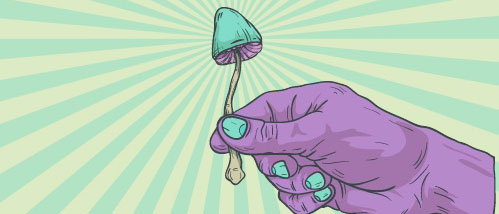
Anyone can tell you about what you experience during a psychedelic trip on psilocybin or LSD. But there are a handful of key figures in the history of hallucinogenic drugs that have made psychedelics such as magic mushrooms and Ayahuasca as famous as they are today. In this article we would like to introduce you to some of these leaders. Meet a sweet female from the jungle, a man who has seen the ceiling of 36 prisons and artists who would never have been as successful without DMT or magic mushrooms. One thing is for sure. Without some of these special people you would have never been able to buy magic mushroom grow kits from us.
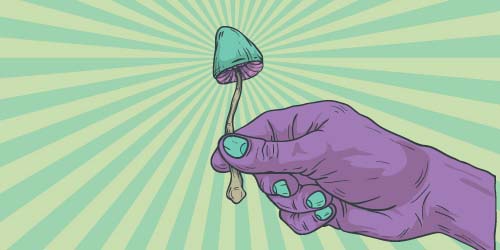
In this article:
- Entheogens: the Medicines of the Shamans
- Robert Gordon Wasson
- María Sabina
- Albert Hofmann
- Aldous Huxley
- Dennis and Terence McKenna
- Alex and Alysson Grey
- Timothy Leary
- And so on: Other important names
- The Ayahuasca Journey: Back to the Jungle
Entheogens: the Medicines of the Shamans
When we talk about psychedelics such as mushrooms, Peyote and Ayahuasca, we have to start from the beginning. We don't know (and we mean science doesn't know) exactly how long these drugs have been used, but there are several indications that all three of these powerful natural psychedelics have been used by natives for thousands of years. That's why we also call these natural products entheogens, after the Greek word for finding the divinity within ourselves.
In some tribes, psychedelics have traditionally been part of a rite of passage: an important step in personal growth towards adulthood. This isn't some kind of a sadistic hazing in a student union. On the contrary. Psychedelics such as magic mushrooms and peyote are still treated with the highest respect until today. In a traditional setting, the whole village is part of the ceremony of the adulthood of one of the children. The idea is that the younger generation consumes psychedelics under the supervision of experienced adults. The goal? That they come out of the trip richer than before they went in.
Other cultures use entheogens to change perception in order to get in touch with ancestors, the gods or the spirits of nature. In this religious, spiritual, and shamanic context, the use of psychedelics is older than most writings. Therefore, we only know this from tradition or archaeological evidence in carbon dating of found psychedelics. It is no coincidence that a medicine man was buried thousands of years ago with his pouch full of magic mushrooms.
Robert Gordon Wasson
Gordon Wasson was an American ethnomycologist (someone who researches the historical use of mushrooms and other fungi). Together with his wife Valentina Pavlovna, Wasson researched the social differences between Russia and America about the use of mushrooms with psilocybin. In 1957 Wasson published the book ‘Mushrooms, Russia and History’. Shortly after that, Wasson travelled to Mexico to investigate the historical use of psilocybin mushrooms and to participate in the Mazatec mushroom ritual.
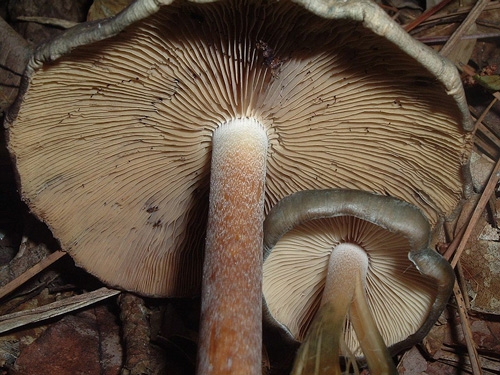
Psilocybe Cearulescens. The magic mushroom where it all started in 1957. Photo: Alan Rockefeller, CC BY-SA 3.0, via Wikimedia Commons
This is how traditional use ended up in the West. In 1957, the magazine 'Life' published the article 'Seeking the Magic Mushroom', in which Wasson shared his findings. This article introduced an incredible amount of people to the world of psychedelics.
María Sabina
Wasson's research was somewhat controversial, as Wasson claimed to be the first Westerner to be allowed to take part in the secret ceremony. The curandera (shaman) María Sabina performed the ritual in front of the outsider Wasson. Wasson asked to be photographed together with this special open-minded female shaman. Sabina agreed, under the condition that the photo was kept secret. But Robert Gordon Wasson published the photo, together with her name and the name of the village where she lived in the article of the magazine.
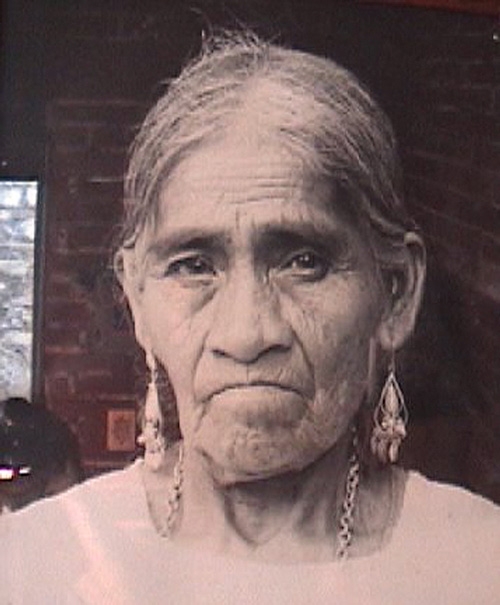
María Sabina. Photo: Carlos Rangel (Public Domain) via Wikimedia Commons
The article and photo of María Sabina led to true pilgrimages from American and European cities to the jungles of Mexico, which led to police action. The Mexican authorities thought Sabina was selling drugs to foreigners. Feelings were running so high in the Mazatec society that they were about to end the mushroom ritual completely. Sabina's house was set on fire and she had to leave. As an exile María Sabina later regretted her openness, but it was too late.
Influential hippies like Timothy Leary, Bob Dylan, John Lennon and Keith Richards would all have visited Sabina, but there is no solid evidence for this wonderful story.
Albert Hofmann
We do know for sure that Robert Gordon Wasson took traces of the Psilocybe Mexicana to Paris, where they were first cultivated using Western science. This led to people becoming interested in the active substance(s) in this mushroom. In 1958 the Swiss scientist Albert Hofmann identified the substance through which humans would encounter the gods: psilocybin.
Albert Hofmann. Photo: Philip H. Bailey, CC BY-SA 2.5, via Wikimedia Commons
Hofmann discovered the substance LSD twenty years earlier. Hofmann noticed that LSD, psilocybin and our "happiness hormone" serotonin are very similar. You might wonder if there are more of these serotonergic substances... With that question in mind, Hofmann and his team synthesized a number of other psychedelic substances in the lab. Some of these substances we know today as the psychedelic party drugs.
Other important discoveries of Hofmann in our world of potent plants are the psychoactive plant salvia divinorum that he discovered in 1962. Hofmann also discovered that the seeds of morning glory contain a substance very similar to LSD. Read more about LSD and the bizarre discovery of the most potent drug in the world in this article: LSD.
Aldous Huxley
The English writer and poet Aldous Huxley built a bridge between the mystical side of Hinduism and Buddhism and the use of LSD and mescaline. In 1954 Huxley wrote the influential book 'The Doors of Perception' in which he shares his experiences with mescaline with the general public. Mescaline is the most important element of cacti such as Peyote. Peyote was already used in shamanic rituals in Mexico and the south of what we now know as the United States around 5700 years ago, but Huxley slowly made mescaline more famous.
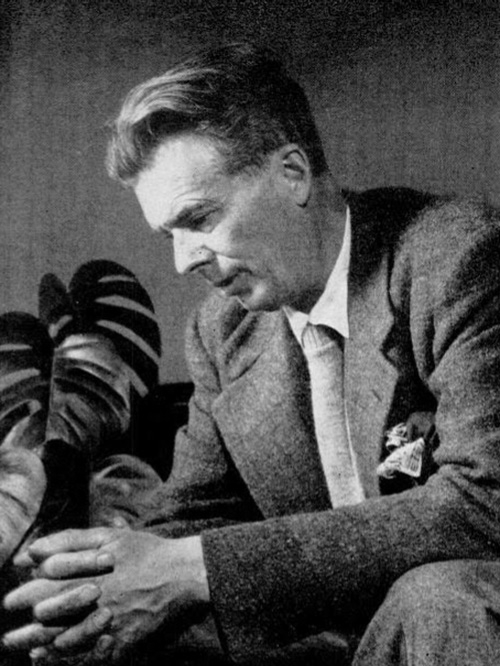
Aldous Huxley. Photo (Public Domain) via Wikimedia Commons
Jim Morrison, singer of the influential psychedelic blues rock band 'The Doors', also experimented with mescaline. The name of the band is based on the book by Aldous Huxley. This is how mescaline seeped into popular culture and the online smartshops of today.
Dennis and Terence McKenna
Dennis McKenna is an ethno pharmacologist (someone who researches traditional medicines). Thanks to Dennis McKenna, we know how an important component in the ayahuasca brew prevents DMT from being broken down by enzymes. The banisteriopsis vine that indigenous people put in the psychedelic drink appears to contain a monoamine oxidase inhibitor (MAO-inhibitor). Until the day of writing, 70-year-old Dennis McKenna is working towards normalizing the use of psychedelics and investigating the effects of trippy plant extracts from the jungle.
His brother is probably better known by the general public. Terence McKenna was the psychonaut who shared his experiences with the general public. He wrote books, appeared on TV at talk shows and was often seen in documentaries. Terence talked about pseudo-scientific topics ranging from metaphysics and alchemy to the importance of psychedelics in understanding the impact of climate change.
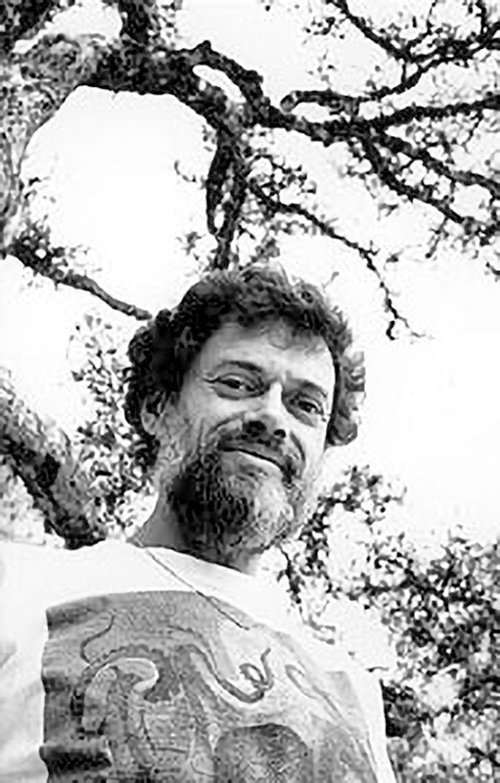
Terence McKenna. Photo: Entropath, CC BY-SA 3.0, via Wikimedia Commons
One of Terence McKenna's works was the stoned ape hypothesis. Terence's idea was that our evolutionary ancestors ate magic mushrooms and our brain capacity grew enormously with them. Psychedelics would have been the accelerator for the evolution of modern man. Far out.
The McKenna brothers developed a method to grow mushrooms from spores they took back to the U.S.A. They published that method in the book 'Psilocybin: Magic Mushroom Grower's Guide' under false names. We owe it to Dennis and Terence McKenna that we sell magic mushroom grow kits today and that everyone can easily grow magic mushrooms themselves. There is even a magic mushroom grow kit named after these amazing brothers.
Alex and Alysson Grey
Alex Grey is a visionary painter and writer. Together with his artistic wife, they have created numerous amazing art works inspired by cosmic, spiritual journeys on psychedelics such as DMT. DMT is the main ingredient in Ayahuasca that creates colorful, mystical experiences full of patterns. These patterns are often found in the work of both Alex and Alysson. Alysson Grey has a sophisticated way of depicting abstract images and Alex sketches an image of the human side of tripping on DMT thanks to a study in anatomy. The paintings are full of detail and are anatomically correct. Like no other, Alex Grey knows how to take the visual side of the DMT trip and translate it to the canvas. This is how we can get a peek into a hidden, mystical world. The Greys currently run a church called The Chapel of Sacred Mirrors, where the couple's works are exhibited.
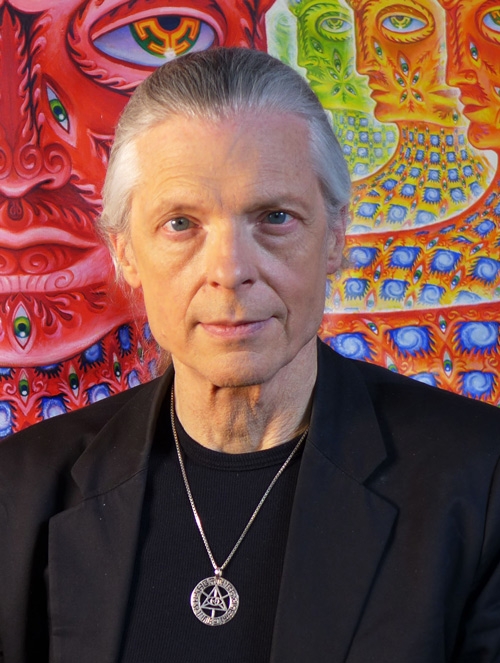
Alex Grey with his work “Net of Being” in the background. Photo: Alexgreycosm, CC BY-SA 3.0, via Wikimedia Commons
Although Grey's work has already been exhibited at concerts of bands like 'Nirvana', the work of Grey became really known through the progressive metal band 'Tool'. Alex Grey has made the album covers and artwork for countless releases, video clips and merchandise. 'Tool' won 3 Grammy Awards with their psychedelic based music and lyrics. Check out this extremely interesting video about an analysis of the complexity of one of Tool's most important songs, Lateralus:
Timothy Leary
Timothy Leary was a psychologist, writer and the showman of psychedelics. Leary also had a strong voice in normalizing magic mushrooms and LSD. Already in the 1960's, Leary saw the potential for therapeutic use of LSD, which triggered the research that today has been taken up by the Johns Hopkins University, among others.
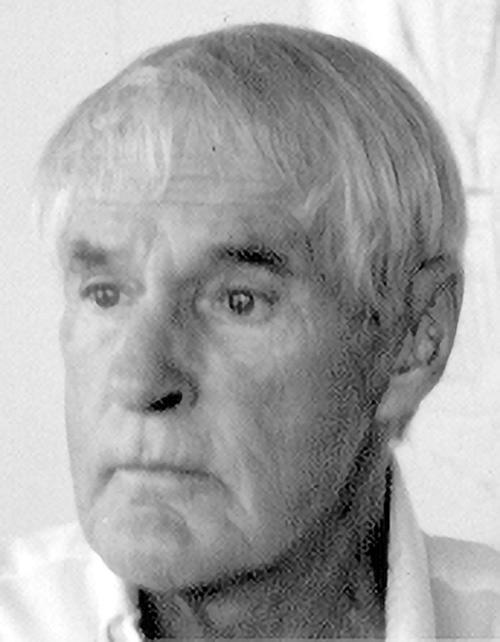
Timothy Leary. Photo: Philip H. Bailey, CC BY-SA 2.5, via Wikimedia Commons
Leary has broken the law so many times with public drug use and incitement to drug use, that he has seen the inside of 36 prisons around the world. President Richard Nixon once called him America's most dangerous man. We shouldn't take that too seriously, because Nixon declared The War on Drugs during his office, which we all still suffer from today. Because Leary was fired from Harvard University for a scandal involving the use of psychedelics, he reached international news. Partly because of this, LSD became a little better known to the general public worldwide. Bad news is news too.
The importance of Set and Setting was developed by Timothy Leary. Today we still use this system to create the ideal basis for a safe, responsible and enjoyable psychedelic trip. Leary worked with Ralph Metzner and Ram Dass (Richard Alpert); other important names in the world of psychedelics.
And so on: Other Important Names in the Psychedelics
Professor Charles Grob is currently leading a research study into the psychological and physiological effects of both MDMA and Ayahuasca.
Joe Rogan regularly receives scientists and advocates in the effort to normalize psychedelics. His podcast currently has 10.1 million followers. Rogan's podcast moves to Spotify in 2021.
Mycologist Paul Stamets is not only the world's most famous expert on mushrooms, but also the brain behind various medicinal mushroom supplements. In the science-fiction series 'Star Trek: Discovery', a character is named after Stamets. This character is the engineer of the spore drive, the drive that moves the spaceship through the mycelial network. The term mycelial network was invented by Paul Stamets during a trip on magic mushrooms and describes how fungal threads connect a large part of life on earth.
Professor Roland R. Griffiths is currently at the forefront of the Center for Psychedelic and Consciousness Research at Johns Hopkins University. Thanks to the renewed medical research at this university, Griffiths has greatly helped to reconsider the legality of magic mushrooms, Ayahuasca, LSD and MDMA.
Rick Doblin is the founder and boss of the Multidisciplinary Association for Psychedelic Studies (MAPS). MAPS is a non-profit organization that is dedicated to making the positive effects of psychedelics more widely known, based on scientific research. The ultimate goal of MAPS is to establish a worldwide network of clinics. There, qualified counsellors will assist patients on a psychedelic inner journey on MDMA, LSD, psilocybin and iboga with drug addiction, PTSD, cluster headaches, fear of death and depression.
Stanislav Grof is a psychiatrist, author and one of the leading developers of transpersonal psychology. His research into unusual states of consciousness such as dreams, psychedelics, near-death experiences and meditation have led to a better understanding of the human psyche in science.
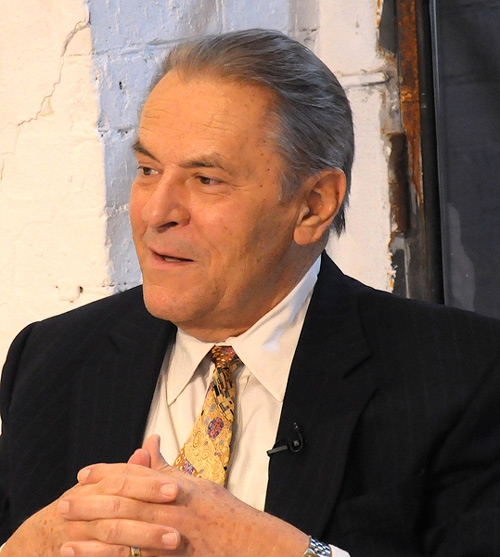
Stanislav Grof. Photo: Anton Nosik , CC BY-SA 3.0, via Wikimedia Commons
The Ayahuasca Journey: Back to the Jungle
All of these and many more important names have made psychedelics and their use famous. Now some psychonauts want to discover for themselves where magic mushrooms, Peyote and Ayahuasca come from. Especially the Ayahuasca trips to the Amazon are currently in a very negative light. This makes the circle of this article complete.
A journey like this to the jungle can be dangerous. First of all, it involves considerable amounts of money that you have to deposit in order to go on such a consecrated journey. Secondly, less fortunate people see an opportunity to quickly become rich, which has resulted in criminals being able to accompany your trip on Ayahuasca. The bizarre story of journalist Amber Lyon confirms this. While she was under the influence, Lyon was touched by the "shaman". Unfortunately, this gentleman could not be charged. When the fake medicine man later learned that Lyon worked as a reporter for CNN, he had left with the northern sun. Unfortunately, stories like this continue to give Ayahuasca a bad name.
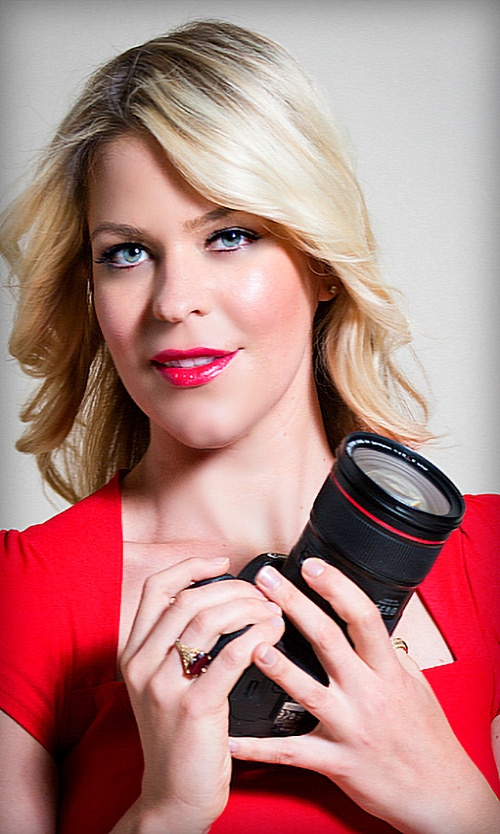
Amber Lyon. Photo: Elizabethcochran00, CC BY-SA 3.0, via Wikimedia Commons
So: is an Ayahuasca trip a good idea? We think the risk is too high. A good supervision of a trip on psychedelics is worth at least as much as the drug. And if you can't guarantee the safety and reliability, the setting is not the right one for such a trip. Who knows, maybe in the future there will be clinics with specially trained staff. That would make the sensible use of these powerful resources a lot more accessible and safer.